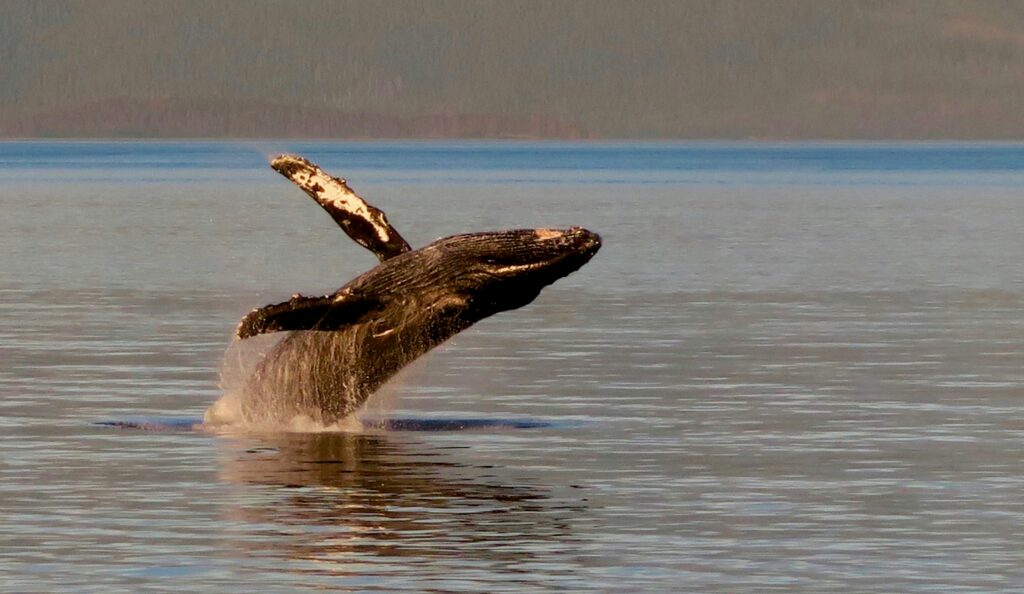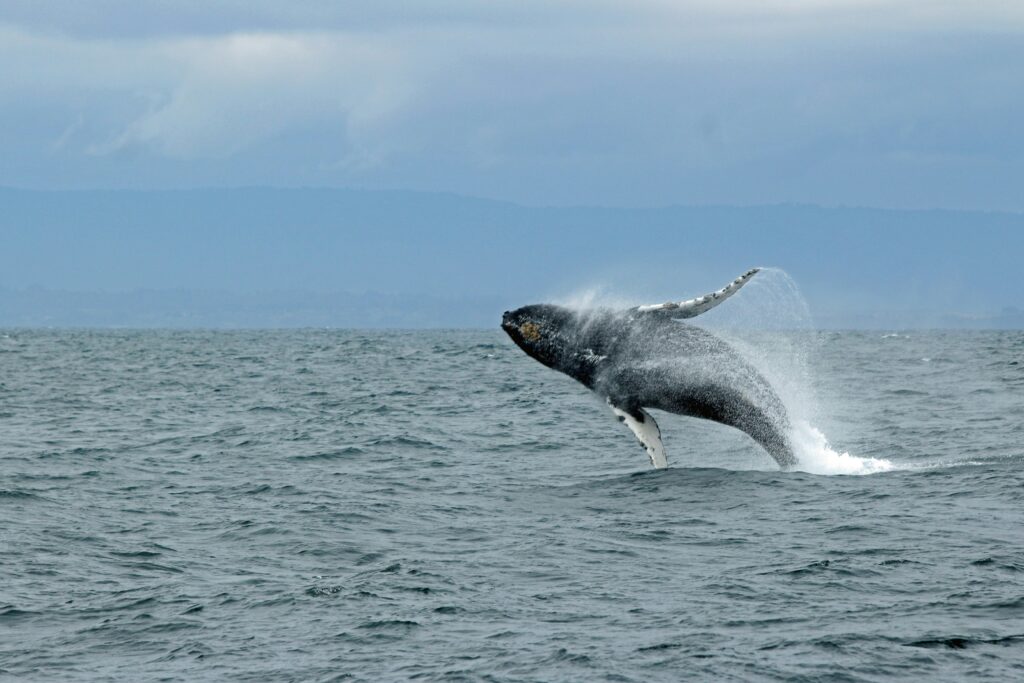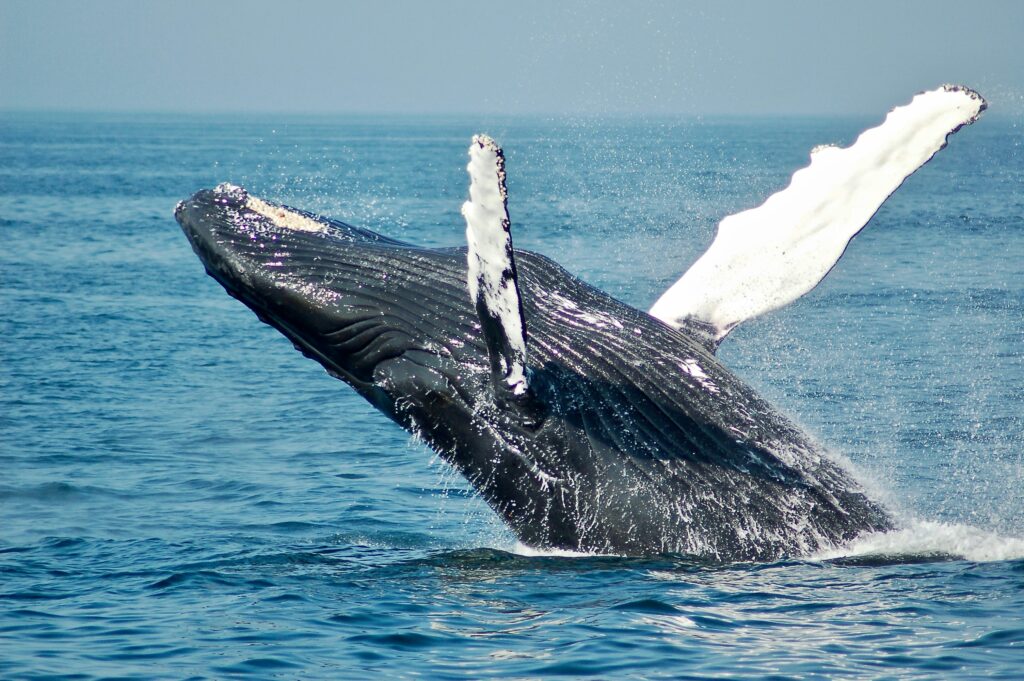The evolution of whales represents one of the most fascinating transformations in mammalian history. While today’s whales are massive, streamlined marine giants, their earliest ancestors were surprisingly different creatures. The first whales, emerging roughly 50 million years ago, were small, four-legged mammals that only vaguely hinted at the ocean behemoths they would eventually become. This remarkable evolutionary journey from land to sea has been pieced together through fossil discoveries that reveal not only size differences but also dramatic anatomical transformations that challenge our imagination. Let’s explore how the earliest whales differed from their modern descendants and what science tells us about these ancient creatures.
The Size of the First Whales: Surprisingly Modest Beginnings

The earliest recognized whale ancestor, Pakicetus, was remarkably small compared to modern whales, measuring only about 1 to 2 meters (3-6 feet) in length—roughly the size of a modern wolf or large dog. This modest creature weighed approximately 45-50 kilograms (100-110 pounds), making it thousands of times smaller than today’s blue whale, which can reach 30 meters and weigh 200 tons. Pakicetus lived around 50 million years ago during the early Eocene epoch and inhabited the shallow waters of Pakistan, from which its name derives. The compact size of this early cetacean ancestor reflects its transitional nature, still bound to both land and water environments, unlike the fully aquatic giants that would evolve millions of years later.
Four Legs, Not Flippers: The Terrestrial Body Plan

Perhaps the most striking difference between the first whales and modern cetaceans was their possession of four fully functional legs ending in hooved feet. Pakicetus and other early whales like Ambulocetus were capable of walking on land, though likely with an awkward gait similar to modern seals. These legs were substantial weight-bearing limbs—not the modified flippers we see in modern whales. Fossil evidence shows distinct ankle bones and toe arrangements similar to those of artiodactyls (even-toed ungulates like cows and hippos), their closest land relatives. The transition from legs to flippers would occur gradually over millions of years as these animals spent increasingly more time in aquatic environments, with later transitional forms showing shortened limbs and webbed digits before eventually developing the specialized flippers and flukes of modern whales.
Skull and Teeth: Hints of a Predatory Lifestyle

The skull of Pakicetus and other early whales reveals crucial information about their lifestyle and evolutionary trajectory. Unlike the specialized skull structure of modern whales, these early forms possessed elongated snouts with heterodont dentition—different types of teeth for different functions, including sharp premolars and molars for slicing prey. This dental arrangement suggests a carnivorous diet, possibly consisting of fish and small aquatic animals. Modern whales, by contrast, have either evolved simple peg-like teeth (in odontocetes) or baleen plates (in mysticetes) for filter feeding. Another telling feature was the position of the eyes on early whales—they were located on the top of the skull, suggesting these animals spent time floating in shallow water while keeping their eyes above the surface, similar to modern crocodiles. This configuration differs dramatically from the eye placement in modern whales, which is optimized for underwater vision.
Ears Adapted for Two Worlds

The ear structure of the first whales provides fascinating insights into their transitional lifestyle between land and water. Pakicetus showed the beginnings of specialized ear adaptations that would later become crucial for underwater hearing, with a thickened tympanic bone that helped conduct sound underwater. However, these adaptations were only partial, suggesting these animals could hear both in air and water, though not with the specialized efficiency of modern whales. Modern cetaceans have highly modified ear structures that completely isolate the ear bones from the skull through fat pads, allowing them to localize sounds underwater with remarkable precision. The gradual transformation of ear structures throughout whale evolution documents their increasing specialization for a fully aquatic lifestyle, with middle ear bones becoming progressively more isolated and dense to better conduct underwater vibrations.
The Missing Tail Fluke

Early whales lacked the distinctive horizontal tail fluke that propels modern cetaceans through water with such power and efficiency. Instead, Pakicetus and its immediate descendants likely had typical mammalian tails that may have assisted with balance when walking on land. The evolution of the tail fluke—essentially a modified tail with expanded horizontal surfaces—occurred gradually as these animals became more aquatic. Intermediate forms like Rodhocetus show evidence of vertebral changes, suggesting the beginnings of fluke development. The tail fluke represents a critical adaptation that allows modern whales to swim using powerful up-and-down motions of their tails rather than the side-to-side movements seen in fish. This mechanical difference stems from their mammalian ancestry, where the vertebral column naturally flexes dorsoventrally rather than laterally—a beautiful example of how evolutionary history constrains and shapes adaptations.
Nostril Position: The Journey to the Blowhole

The first whales had nostrils located at the tip of their snout, just like most land mammals, rather than the specialized blowholes positioned on top of the head in modern cetaceans. The migration of the nostrils from the front to the top of the skull represents one of the most dramatic transformations in whale evolution. This shift occurred gradually over millions of years as these animals spent more time submerged, creating selective pressure for more efficient breathing at the surface. The fossil record documents this migration beautifully, with transitional forms showing nostrils progressively positioned further back on the skull. The blowhole configuration allows modern whales to breathe while keeping most of their body submerged—a crucial adaptation for creatures that spend their entire lives in water and need to minimize energy expenditure when surfacing to breathe.
Body Shape: From Wolf-Like to Streamlined

The overall body shape of the first whales was decidedly un-whale-like, more resembling that of a long-snouted, long-tailed wolf or dog with relatively short legs. This body plan reflected their transitional ecology, still partly tied to terrestrial environments. The streamlined, torpedo-shaped body of modern whales, with its smooth contours and reduced external features, evolved gradually as these animals became fully aquatic. Intermediate forms show progressive adaptations for aquatic life, including more powerful tails, reduced neck length, and increasingly hydrodynamic body shapes. These changes reduced drag in the water, allowing for more efficient swimming and diving. The transformation from a four-legged mammal to the specialized aquatic form of modern whales represents one of the most dramatic examples of morphological evolution documented in the fossil record.
Habitat: Shallow Waters, Not Ocean Depths

Early whales inhabited significantly different environments than their modern descendants, living primarily in shallow coastal waters and estuaries rather than the open ocean. Geological evidence from Pakicetus fossils indicates these animals lived in warm, shallow seas that periodically dried out—environments more similar to today’s coastal wetlands than the deep marine habitats occupied by many modern whales. These early whales likely divided their time between land and water, perhaps similar to modern semi-aquatic mammals like otters. The transition to fully marine environments occurred gradually as later descendants evolved adaptations that allowed them to venture into deeper waters and eventually colonize the open ocean. This habitat shift represents not just alocation changen but in selective pressures, driving the evolution of deep-diving adaptations, enhanced swimming efficiency, and specialized feeding strategies seen in modern whales.
The First Fully Aquatic Whales: Basilosaurus and Dorudon

While Pakicetus and Ambulocetus were early transitional forms, the first fully aquatic whales appeared around 41-35 million years ago, represented by creatures like Basilosaurus and Dorudon. These animals were significantly larger than their earlier ancestors, with Basilosaurus reaching lengths of up to 18 meters (60 feet)—approaching the size of some modern whales. They possessed streamlined bodies with powerful tails for swimming and had reduced hindlimbs that were no longer functional for terrestrial locomotion. Despite these adaptations for aquatic life, these animals still differed considerably from modern whales, with more elongated bodies, smaller brains relative to body size, and different vertebral structures. The vestigial hind limbs in these animals—tiny bones embedded in their body wall with no connection to the spine—provide compelling evidence of their evolutionary history as descendants of four-legged ancestors.
Diet: From Fish-Eaters to Filter-Feeders

The dietary adaptations of whales have undergone remarkable transformations since their earliest forms. Pakicetus and other early whales were active predators with teeth adapted for catching and eating fish and other small prey—a far cry from the specialized feeding methods seen in many modern whales. The evolution of filter-feeding using baleen plates—the system employed by blue whales, humpbacks, and other mysticetes to strain tiny krill from seawater—didn’t occur until much later in whale evolution, roughly 30 million years ago. This dietary shift from active predation to filter-feeding allowed some whale lineages to exploit abundant small prey like krill and small fish, ultimately enabling the evolution of the enormous body sizes seen in modern baleen whales. The separation between toothed whales (odontocetes) and baleen whales (mysticetes) represents one of the major divergences in cetacean evolution, leading to distinct ecological niches and feeding strategies.
Breathing Adaptations: Air-Breathers in a Water World

Early whales faced the fundamental challenge that all marine mammals contend with: they needed to breathe air while living in an aquatic environment. Pakicetus and its immediate descendants likely needed to surface frequently to breathe, lacking the specialized adaptations that allow modern whales to dive for extended periods. Modern cetaceans possess numerous physiological adaptations for efficient breathing and diving, including increased blood volume, higher concentrations of oxygen-binding proteins, and the ability to collapse their lungs during deep dives to prevent nitrogen absorption. They can also slow their heart rates dramatically during dives to conserve oxygen. These sophisticated adaptations evolved gradually as whales spent increasingly more time in deeper waters, where efficient oxygen use became critical for survival. The respiratory system of the first whales, while beginning to show aquatic adaptations, would have been much closer to that of standard terrestrial mammals.
The Evolutionary Timeframe: A Rapid Transformation

The evolution from the first whale ancestors to fully aquatic forms occurred with remarkable speed in geological terms. From Pakicetus approximately 50 million years ago to fully aquatic forms like Basilosaurus roughly 40 million years ago, the major transformations in body plan occurred within about 10 million years—a relatively brief window for such dramatic anatomical changes. This rapid evolution suggests strong selective pressures favoring aquatic adaptations, perhaps due to reduced competition in marine environments or abundant food resources. The subsequent diversification into the various modern whale groups occurred more gradually over the next 35 million years, with mysticetes and odontocetes diverging approximately 34 million years ago. The speed of the initial transition from land to sea in whale evolution is often cited as one of the most striking examples of relatively rapid large-scale evolutionary change documented in the fossil record, demonstrating how natural selection can produce dramatic transformations when environmental conditions favor new adaptations.
Evolutionary Relationship to Modern Land Mammals

Genetic and morphological evidence has conclusively demonstrated that whales evolved from artiodactyls—the group of even-toed ungulates that includes cattle, deer, pigs, and hippopotamuses. Modern genetic analysis has revealed that hippos are the closest living relatives to whales, having shared a common ancestor around 54 million years ago. This evolutionary relationship explains several anatomical features seen in early whale fossils, including specific ankle bone arrangements characteristic of artiodactyls. The transition from hoofed land mammals to ocean-dwelling whales represents one of the most dramatic evolutionary transitions known to science, challenging earlier perceptions about the pace and possibility of major anatomical reorganization. This relationship also explains why the first whales looked so unlike modern forms—they were essentially specialized artiodactyls in the early stages of adapting to an aquatic lifestyle, retaining many features of their terrestrial ancestors while beginning to develop new adaptations for life in water.
The Remarkable Journey from Land to Sea

The story of whale evolution stands as one of nature’s most extraordinary transformations. From the wolf-sized, four-legged Pakicetus roaming the shorelines of ancient Pakistan to the colossal blue whales that navigate today’s oceans, the journey represents a remarkable example of adaptation and natural selection. The first whales—small, terrestrial, with legs instead of flippers and nostrils instead of blowholes—would be barely recognizable as whale ancestors to untrained eyes. Yet the fossil record provides compelling evidence of this transition, documenting the gradual development of aquatic adaptations over millions of years. This evolutionary narrative not only illuminates the origins of these magnificent marine mammals but also demonstrates the incredible plasticity of life over geological timescales, showing how environmental pressures can reshape body plans dramatically when the right conditions persist. From modest beginnings, whales evolved into the largest animals ever to inhabit our planet—a testament to the power of evolutionary processes working across millions of years.




